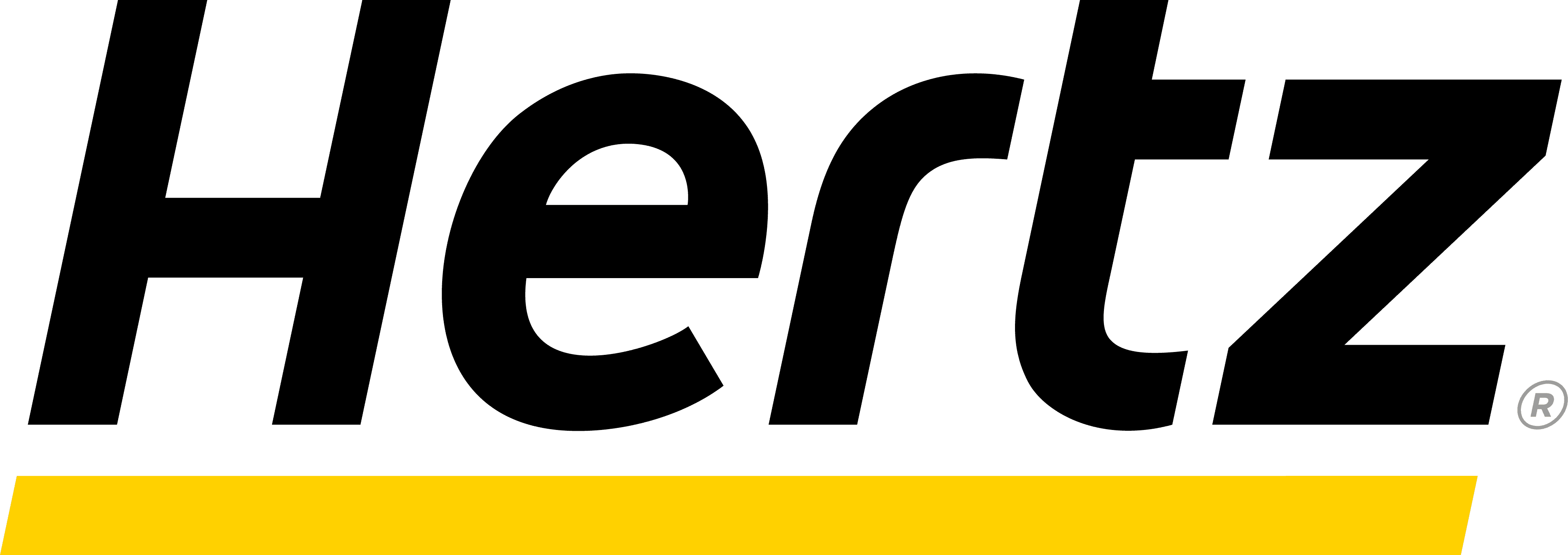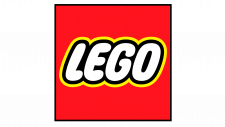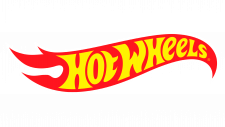Hertz Logo
Hertz is a globally recognized car rental company, renowned for providing a wide range of vehicle rental services. Established by John D. Hertz, it has grown into a symbol of reliability and convenience in the transportation sector. The company operates in several countries around the world, offering services primarily at airports, city centers, and key tourist destinations. Hertz’s extensive network spans across continents, making it a go-to choice for travelers seeking efficient and accessible vehicle rental solutions.
Meaning and history
Hertz was founded by Walter L. Jacobs in 1918, who started the business in Chicago with a small fleet of Model T Ford cars. Later, John D. Hertz acquired the company, transforming it into the Hertz Corporation. Over the years, Hertz has achieved numerous milestones, including pioneering the concept of one-way rentals and introducing the first computerized car rental reservations system.
In terms of achievements, Hertz has been a leader in adopting innovative technologies and eco-friendly practices. The company was one of the first to offer electric vehicles in its rental fleet, aligning with growing environmental consciousness. Hertz has also been recognized for its exceptional customer service and expansive fleet, which includes luxury, sports, and hybrid vehicles to cater to diverse customer needs.
Currently, Hertz holds a prominent position in the car rental industry. It has weathered various economic challenges and has continued to evolve, embracing digital transformation to enhance customer experience. The company’s resilience and adaptability have secured its status as a trusted name in car rentals, offering services that combine quality, convenience, and sustainability.
1926 – 1940s
The logo characterized by a central, passionate red heart contour. This emblematic heart is bisected by a swathe of white, where the name “Hertz” is inscribed in an exclusive, bold typeface that is assertive yet fluid, with the terminal strokes of ‘H’ and ‘z’ ambitiously reaching out to the border. Encapsulating the company’s name, the expressions “DRIVURSELF” and “SYSTEM” curve in harmony with the heart’s shape, conveying the self-driven ethos of the brand. Completing the logo, an intricate, scrolled ironwork-like detail crowns the heart, implying a blend of tradition and sophistication. This logo resonates with a bygone era, reflecting a distinguished history in automotive rental services.
1940s – 1955
The image exhibits an evolved logo of the Hertz Corporation, distinct from its earlier heart-emblem counterpart. This graphic, set against a minimalist line-drawn map of the United States, features a bold, slanted rectangle with the name “HERTZ” in oversized, yellow capital letters, conveying a sense of forward motion and dynamism. Below, “DRIV-UR-SELF SYSTEM” is spelled out, maintaining the self-service ethos, while “THE WORLD’S LARGEST” claims its status in a more understated type. The geographic backdrop implies a wide-reaching presence, a leap from the intimate appeal of the previous logo, to a broader, more assertive declaration of the company’s expansive reach.
1955 – 1966
The logo depicts the Hertz name in bold, black, capital letters against a bright yellow parallelogram, slanting forward to suggest movement and efficiency. Below, “RENT A CAR” is written in smaller font, clearly stating the company’s service. This logo forgoes the earlier map and taglines for a simple yet powerful message, emphasizing directness and an action-oriented approach. The contrast in color and the lean of the design mark a modern turn from previous iterations, focusing on the brand’s name and core service, thus reinforcing its identity in the car rental market.
1966 – 1987
The company’s name in sleek, black font on a white band, set against a canary-yellow rectangle with rounded corners. This design marks a departure from the previous slanted parallelogram motif, opting for a more stable and balanced look. The simplicity of the color scheme and the absence of additional text reflect a confident brand identity that relies on the power of name recognition alone, a contrast to the earlier versions that paired the name with descriptive taglines.
1987 – 2009
This iteration of the Hertz logo displays the company name in a dynamic, italicized font, with a three-dimensional effect given by the use of shadowing. The letters are rendered in black with a yellow fill, creating a strong visual contrast. This logo eschews the previous rectangle and instead lets the text stand alone, suggesting a sense of freedom and movement. The addition of the registered trademark symbol signifies the company’s established brand identity. The design reflects a shift from the straightforwardness of the 1966 logo to a more stylized and assertive branding approach.
2009 – Today
The logo features a contemporary look with the Hertz name in a sans-serif, black font centered on a yellow, rounded-edge rectangle. This design marks a return to the earlier use of a bordered shape, but with softer edges, contrasting with the more aggressive angles of the 1987 version. The use of shadows is abandoned, favoring a flat, more web-friendly aesthetic. The logo’s clean lines and the registered trademark symbol signify a modern, legally protected brand identity, reflecting the company’s ongoing evolution while maintaining its signature color scheme.
2009 – Today
The logo displays “Hertz” in large, bold, black letters, presenting a strong contrast against the white and yellow background. The font is modern, with a slight slant suggesting speed and efficiency. Beneath the company name is a yellow horizontal bar, a minimalist element that anchors the design. This logo is a progression from the previous iteration, stripping away the rounded rectangle for a more straightforward, text-centric approach. The clean lines and stark color contrast reflect a contemporary and refined corporate identity.


















